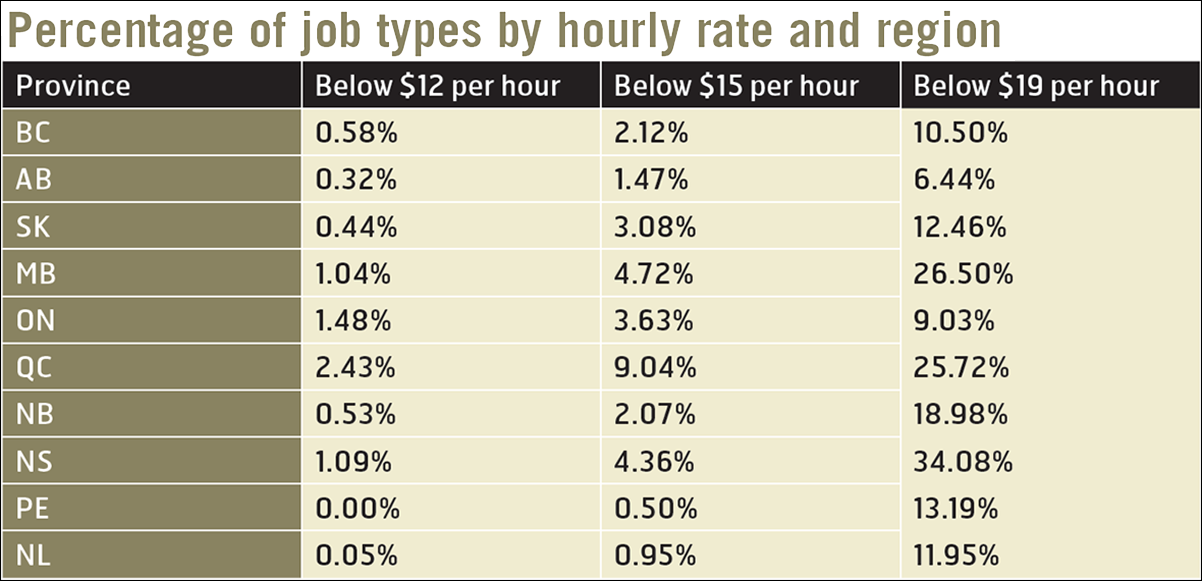Brian Edgecombe | CUPE Research
Raising the wage floor is all about improving income for low-paid workers. Minimum wage rates across the country are still below the poverty line and too many workers struggle to make ends meet. Developing bargaining strategies that raise the wage floor will have an impact on thousands of CUPE members.
Reviewing the wage information in our Collective Agreement Information System (CAIS) produces interesting results.
CUPE members work in 84,387 different job types. Of those, 873 job types (one per cent) have pay rates less than $12 per hour. 2,844 (3.37 per cent) of job types fall below $15 per hour. 11,249 (13.33 per cent) of job types fall below $19 per hour, the target rate established in the Strategic Directions document adopted at CUPE’s 2015 National Convention.
A closer look at these numbers shows that CUPE members with jobs in our Recreation, Culture & Entertainment and our Social Services sectors are more likely to be in low-wage jobs. Adjacent tables show breakdowns of the percentage of jobs by sector or region that fall below the three key thresholds. A reminder: these are not percentages of members in low-wage jobs, but rather, a percentage of job types that are low wage.
CUPE participates in a Living Wage movement that is building momentum across the country. These campaigns set goals to improve minimum wage standards, and close the gap between a minimum wage and the poverty line.
We also work to achieve our Strategic Directions objective by negotiating the wage increases necessary to move these job types above the $19 per hour mark.
Bargaining strategies that seek to not only stay above the floor can help support the goals of living wage advocates, which in turn helps other workers.
Here are a couple ways that collective agreement language can accomplish this goal:
Minimum wage plus
This language sets the wage rate above the floor and ensures the rate moves if the floor moves. It’s done by setting the wage rate for specific jobs in the wage grid at minimum wage plus a dollar figure or a percentage.
Minimum wage increase triggers
This language moves wages for all jobs covered under the collective agreement when there is a change in the minimum wage rate. This language would specify that wage rates in all classifications increase by a certain percentage of the increase in minimum wage, and would occur within a set time period of any announced increase from the province.
Talk to your servicing representative about specific language best suited to your local.




